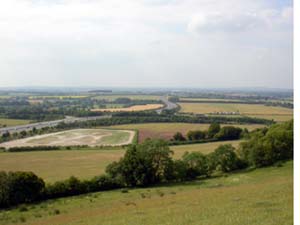
England
Information
The
England Biodiversity Group (EBG) advises the Government on the
implementation of the UK Biodiversity Action Plan (UKBAP) for England.
The EBG is part of the UK Government’s response to the Convention
on Biological Diversity (CBD) signed in 1992. The EBG is chaired
by DEFRA and involves stakeholders from public and private sectors
totalling more than 1,500 organizations. For a complete list click
here.
The EBG takes a five pronged approach to biodiversity conservation:
1. Develop and lead delivery of the Biodiversity Strategy for England
as part of the UK Biodiversity Action Plan;
2. Identify resource requirements and funding for the England Biodiversity
Strategy;
3. Be the focal point for biodiversity partnership in England;
4. Provide a conduit for the transmission of information to and
from the national, regional and local levels;
5. Promote public understanding and awareness of biodiversity.
In October 2002, the England Biodiversity Group working with the
Grain of Nature released The
England Biodiversity Strategy, which establishes a five-year
work programme for implementing the UKBAP in England. The Strategy
is divided into a number of different sectors. The implementation
of the business sector rests with the England Biodiversity Business
Strategy Implementation Group. The Business and Biodiversity Strategy
sets out three specific indicators against which progress is measured.
The first is the condition of Sites of Special Scientific Interest
(SSSI’s), the second is company participation in the Business
in the Environment (BiE) Index of Corporate Environmental Engagement,
and the thrid is company contribution to Local Biodiversity Action
Plans (LBAPs)
In addition to business, there are five specific proposals for
sectors to conserve biodiversity and enhance the environment:
Agriculture
Water
and wetlands
Woodland
and forestry
Towns,
cities and development
The
coasts and the seas
In order to accomplish the goals of the strategy Local Biodiversity
Partnerships (LBPs) implement a wide range of Local Biodiversity
Action Plans (LBAPs) throughout England. These address specific
local issues areas, compiled in accordance with the targets set
out in the UK Species and Habitat Action Plans. To find your Local
Biodiversity Action Plans use this map.
Each LBP works with partners to determine local priority areas.
Earthwatch recently published a set of guidelines designed for LBPs,
click here
to read them.
Publications
In line with its obligation to the Secretary of State for Environment,
Food, and Rural Affairs EBG will publish a full report in 2006 detailing
all of its activities. In the meantime, EBG published a set of biodiversity
indicators called Measuring
the Progress of the Biodiversity Strategy for England: Baseline
Assessment in December 2003, as well as an Annual
Stock Take on EBG’s progress with each of the sectors
addressed in the strategy. EBG also published a set of six case
studies on local biodiversity partnerships in Cardiff,
Herefordshire,
Nottinghamshire,
Cheshire,
Staffordshire,
Kent.
Resources
Countdown
2010 Initiative
BARS
and Local BAP Targets
Biodiversity Targets in England
North
East, Yorkshire, Northwest,
West Midlands, East
Midlands, East of
England, London,
South
West, South
East
England
Biodiversity Strategy
Summary of the England
Biodiversity Strategy Objectives
Photo Credit: Claudia Eckhardt/Earthwatch Institute
(Europe) |




